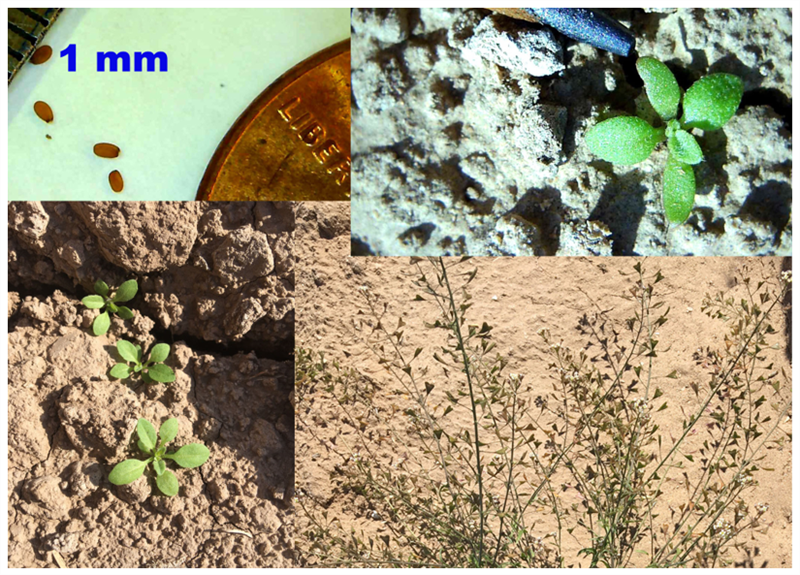Nov 27, 2019
USDA’s Import Federal Orders on Tomato Brown Rugose Fruit Virus; What Does it Mean to the Agriculture Community?
On November 15, 2019, United States Department of Agriculture –Animal and Plant Health Inspection Service (USDA-APHIS) issued a Federal Order imposing restrictions on imports of tomato and pepper seed lots, transplants, and fruit from all countries where tomato brown rugose fruit virus exists. The order has been in effect since Friday, November 22. In addition, U.S. Customs and Border Protection (CBP) will increase inspections of tomato and pepper seed, plant, and fruit imports from countries where the virus is known to occur and will take action to keep any infected products out of the country.
What is Tomato brown rugose fruit virus?
Have you heard of Tobacco mosaic virus? Plant viruses in general are obligate parasites, meaning they can live only in living hosts or vectors (thrips, aphids, hoppers etc). But the members of Tobamovirus, Tobacco mosaic virus (TMV) and Tomato mosaic virus (ToMV) can live in debris, greenhouse/field tools, even in soil for months. Tobacco mosaic virus (TMV) can live even in cigarette and be transmitted to plants if the person smoking touches the plants with the same fingers!? Impressive!!
Tomato brown rugose fruit virus is similar to TMV and ToMV in regards to persistence. However, resistant varieties of tomato that have TM1, TM2, and TM22 genes against TMV and TomV are not resistant to Tomato brown rugose fruit virus.
History of Tomato brown rugose fruit virus (ToBRFV)
TOBRFV was first identified in Israel in 2015. Since then the virus has been found in several countries including China, Greece, Turkey, Italy, Jordan, Mexico, Netherlands, Israel and Palestine. It has been reported but eradicated in Germany. The virus takes it name from the rugose(wrinkle) symptoms on fruit (see picture). On pepper plants it causes bubbling and mosaic on leaves. In tomato plants, the leaves have fern leaf/shoestring appearance (see pic).
What does the USDA regulation mean?
The regulation requires all the tomato fruits, seeds, plant materials coming in to the United States from the countries where the virus has been reported to be certified and virus tested in the country of origin. The seed lot, fruit lot, plant materials lot has to have inspection certificate by National Plant Protection Organization of each country along with the phytosanitary certificate.
What does it mean for Yuma and Imperial Valley?
Though we don’t grow tomatoes commercially in Yuma area, we still have to be extremely careful. Especially considering the fact that a lot of us buy grocery from Mexico and the virus has been reported in Mexico. And some of us grow tomatoes and peppers in our home garden. So it is important that we do not purchase tomatoes and peppers without the inspection certificate.
Why the USDA regulation?
This is a preventative approach to restrict the entry of virus in the United States. As mentioned earlier in the article, the virus is aggressive without even needing a vector. And with no resistant varieties of tomato or pepper available as of now, the virus could be a big problem if introduced. The unmarketable fruits, and reduction in overall yield can increase the market price. Not to mention the virus has the potential to infect many other solanaceous and non-solanaceous crops.
Where can you get your plants tested?
There are three commercial labs that can test your tomato or pepper samples for the presence of virus.
Agdia: https://www.agdia.com/
Eurofins: USA https://www.eurofinsus.com/
Cal Seed and Plant Lab: https://csplabs.com/
What do you do if you see the symptoms in your tomato and pepper plants as described in this article?
If you think your tomato or pepper has ToBRFV, please contact me (bpoudel@email.arizona.edu), or any local/state/federal plant pathologist, or any representative of USDA.
Helpful links:
Recent KYMA segment about the virus with Dr. Poudel: https://kyma.com/news/2019/11/25/tomato-industry-threatened-by-virus/
USDA stakeholder order: https://www.aphis.usda.gov/aphis/newsroom/stakeholder-info/sa_by_date/2019/sa-11/tomato-brown-rugose-fruit-virus
FAQS: https://www.aphis.usda.gov/aphis/ourfocus/planthealth/import-information/federal-import-orders/tobrfv/tomato-brown-rugose-fruit-virus-faqs








